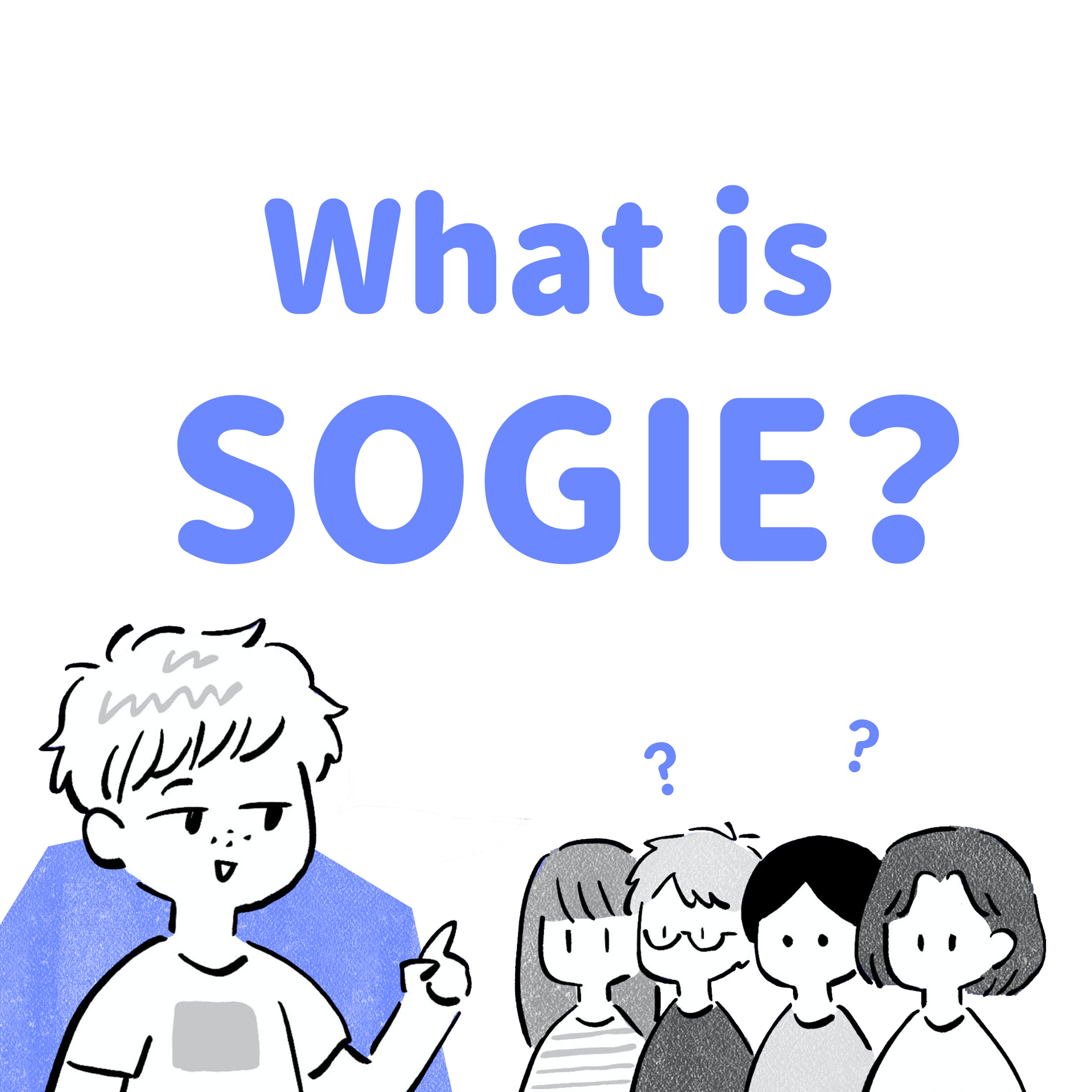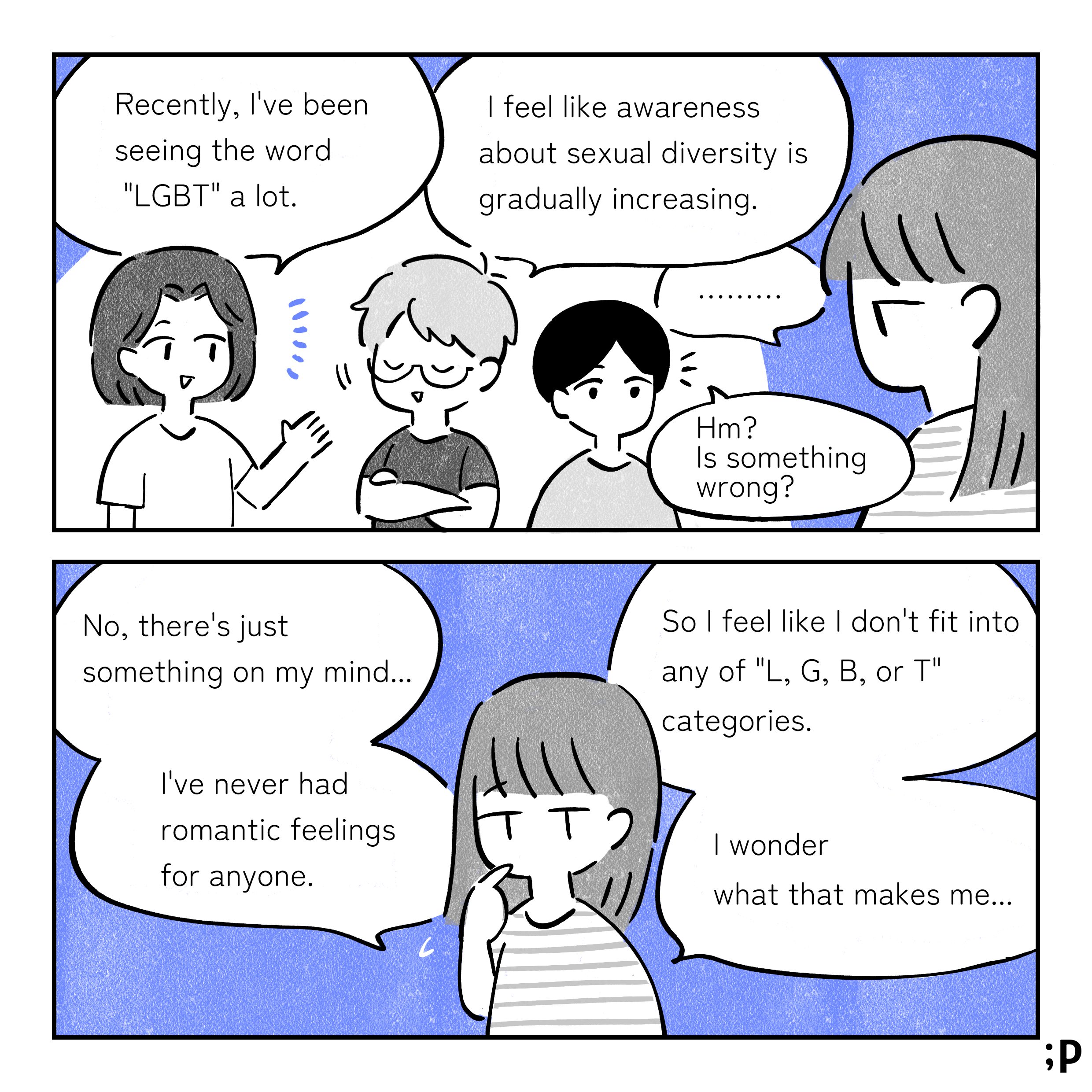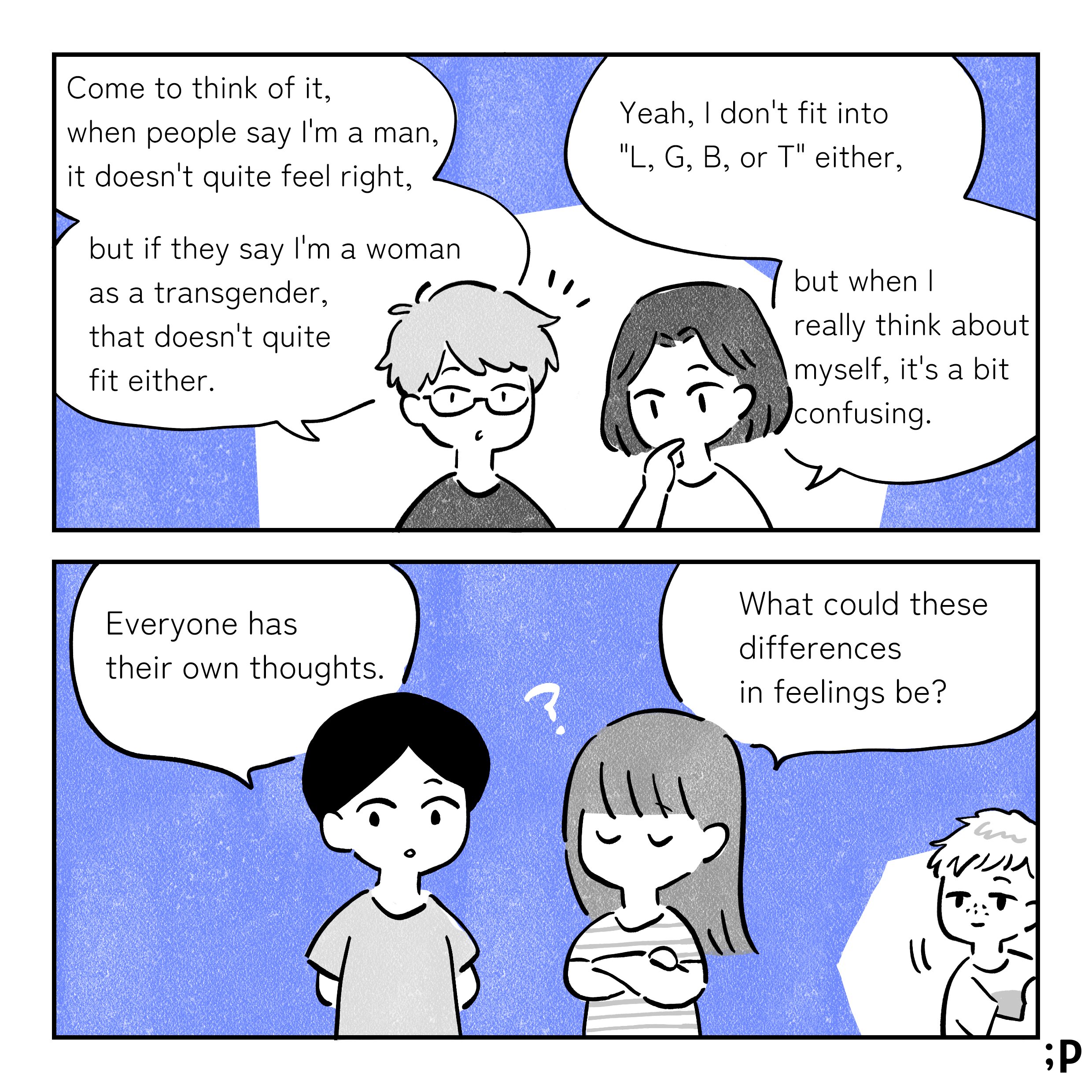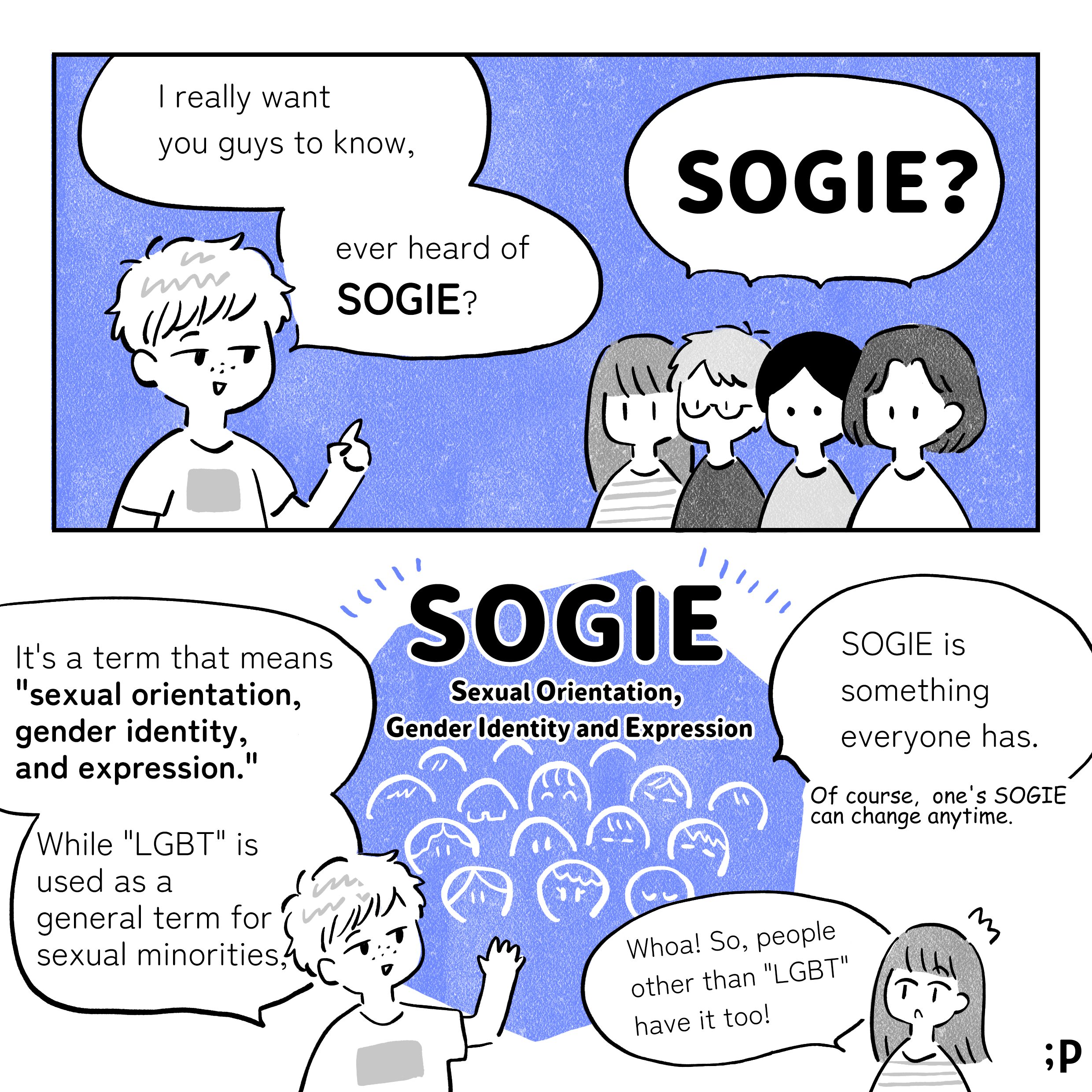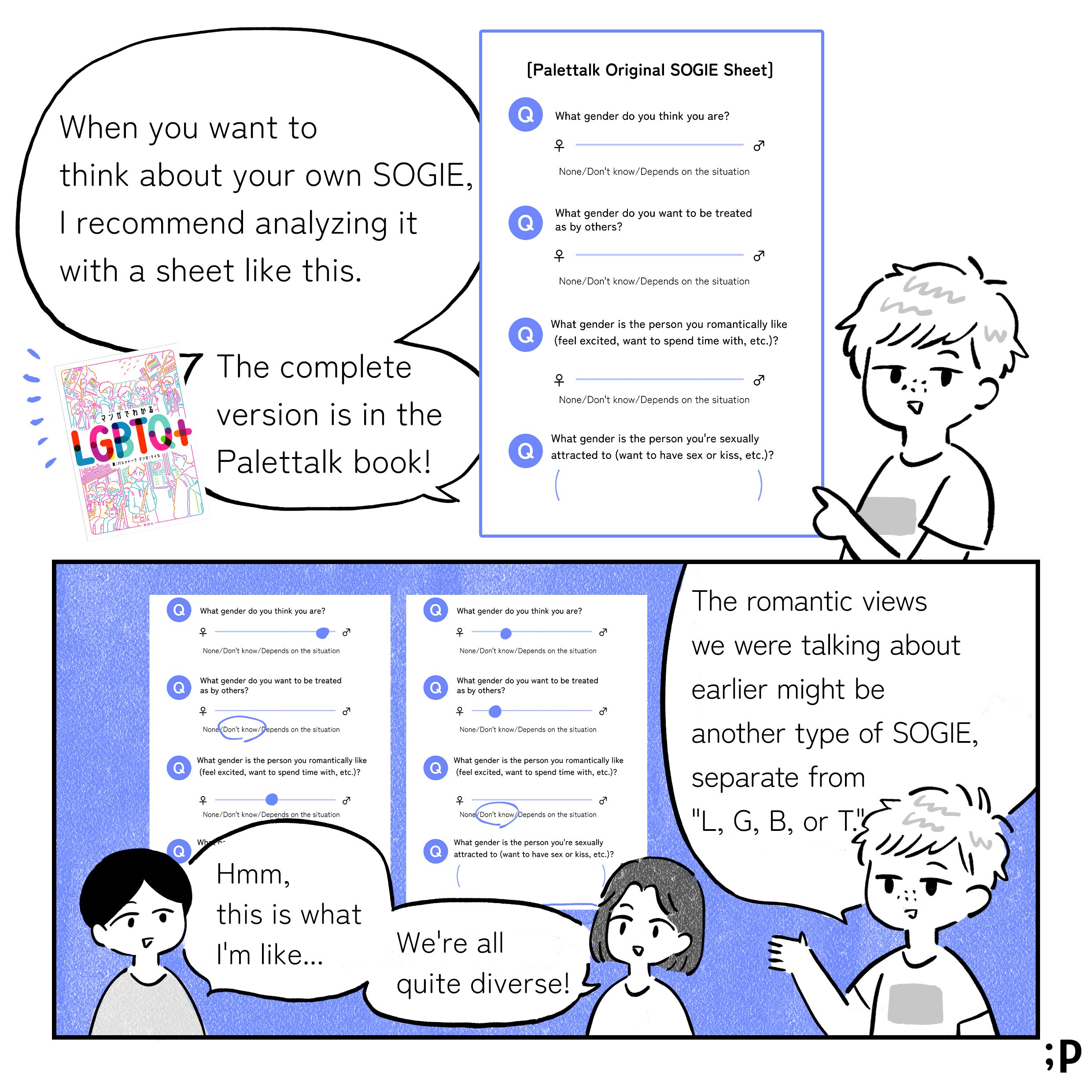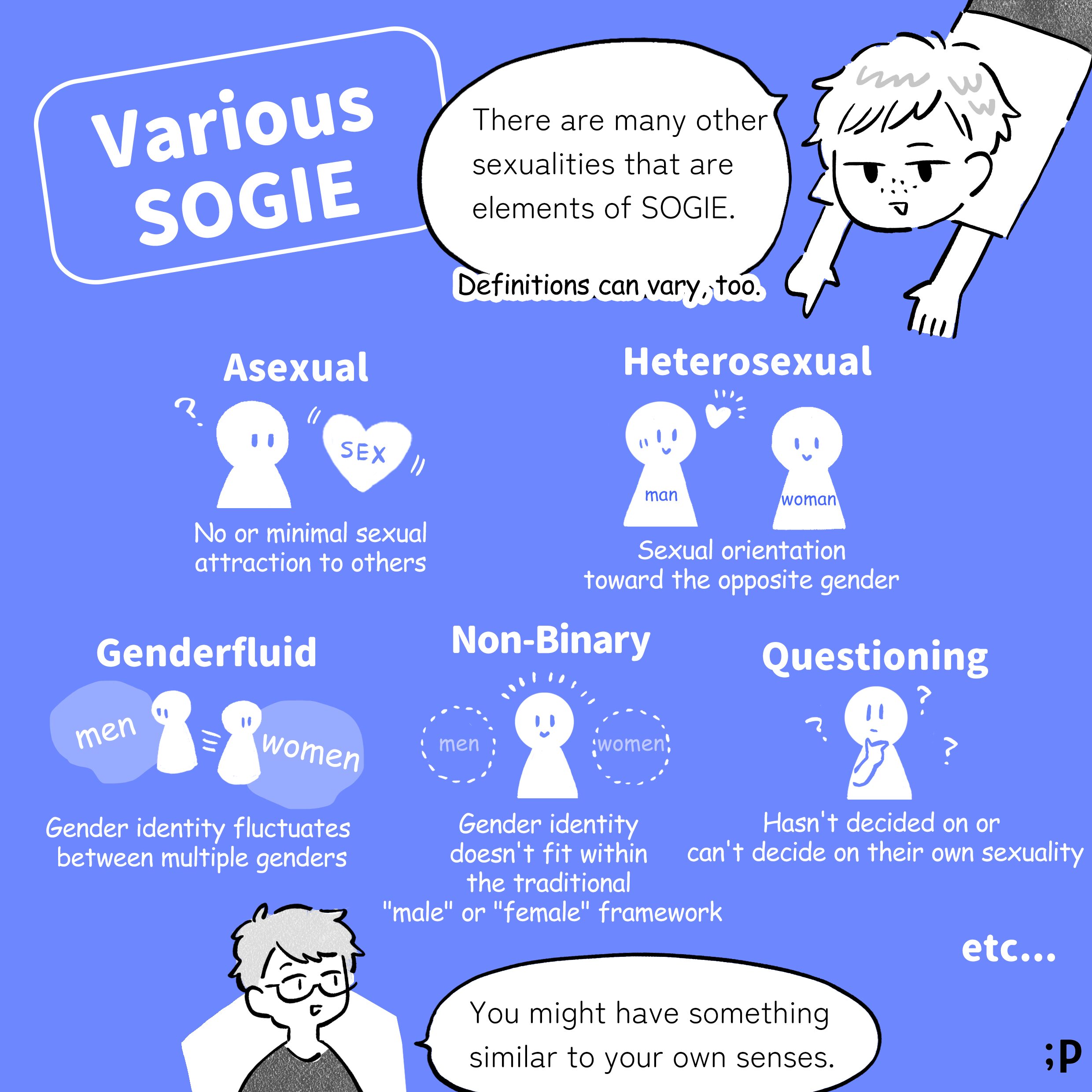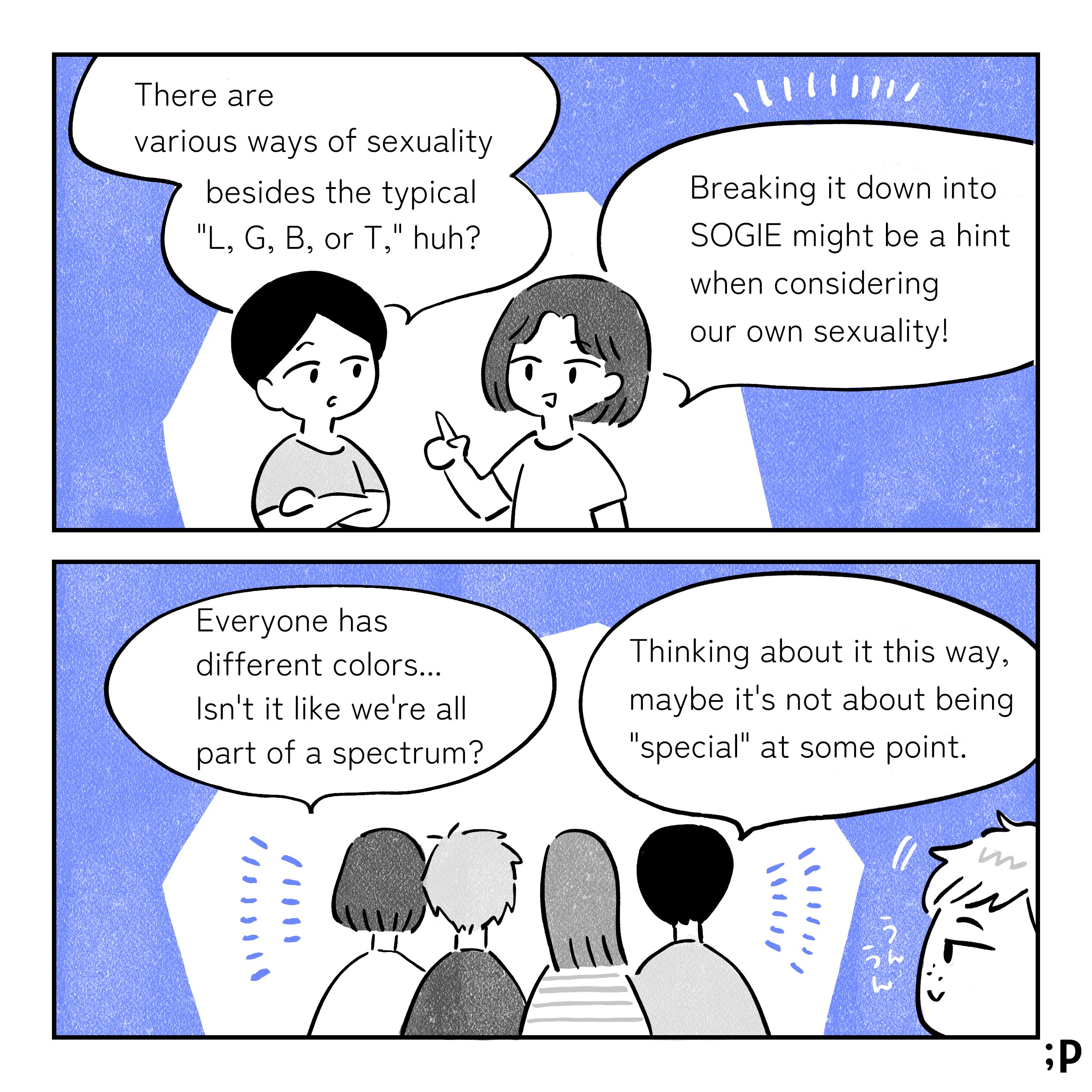【Manga】What’s SOGIE?: Exploring the Spectrum of Sexuality
In recent years, there has been a growing interest in the diversity of sexuality, and the term “LGBT” has become widely known. In fact, according to the “LGBTQ+ Survey 2020” announced by Dentsu, over 80% of people responded that they know the term “LGBT.”
However, when it comes to hearing the term “diversity of sexuality,” there might still be relatively few who feel it personally relates to them.
Recently, alongside the term “LGBT,” another word used to express the diversity of sexuality is “SOGIE.” This term is gaining popularity.
Many people tend to perceive diversity in sexuality as something unrelated to themselves, but SOGIE is something that everyone possesses. In this manga, we’ll delve into the details of SOGIE to provide a better understanding!
What is LGBTQ+?
LGBTQ+ is a term used to encompass sexual minorities. It consists of the initial letters representing Lesbian, Gay, Bisexual, Transgender, Queer/Questioning.
- Lesbian: A woman who is attracted to other women.
- Gay: A man who is attracted to other men.
- Bisexual: A person attracted to both men and women (or attracted to two or more genders).
- Transgender: Someone whose gender identity differs from the sex assigned at birth.
- Queer: An umbrella term for individuals whose sexual orientations differ from the traditionally perceived norms (heterosexual/cisgender).
- Questioning: Individuals unsure or choosing not to define their sexual orientation.
Now, how does SOGIE differ in meaning from LGBTQ+?
Meaning of SOGIE
Sexual diversity has gained rapid attention in recent years.
While there are numerous elements that make up our sexual diversity, the focus has predominantly been on three aspects: sexual orientation, gender identity, and gender expression. SOGIE, is an acronym derived from the initials of these aspects.
- Sexual Orientation: The kind of gender or genders one is attracted to.
- Gender Identity: How one perceives their own gender.
- Gender Expression: The way one expresses their gender or the gender presentation that feels right to them.
Note: Sometimes, the expression SOGI is used specifically for Sexual Orientation and Gender Identity.
While SOGIE is a term used to describe one’s sexuality, LGBTQ+ is also a term related to one’s sexuality. You might be wondering about the differences between the two.
Now, what’s the difference between SOGIE and LGBTQ+?
Differences Between “LGBT” and SOGIE
“LGBT” is an acronym representing “Lesbian, Gay, Bisexual, Transgender,” and is used as a collective term for what are commonly referred to as sexual minorities.
On the other hand, as mentioned earlier, SOGIE stands for Sexual Orientation, Gender Identity, and Gender Expression. It encompasses all individuals, whether or not they fall within the “LGBT” categories.
For instance, a person assigned male at birth, identifying as male, and attracted to females has a SOGIE of heterosexual/cisgender.
Similarly, someone assigned female at birth, identifying as female, and attracted to males has a SOGIE of heterosexual/cisgender.
This signifies that individuals who align with what has been considered the “normal” sexuality, such as heterosexual or cisgender, also possess a SOGIE.
Furthermore, sexual orientations among those identified as sexual minorities extend beyond L, G, B, and T. For instance, Asexual individuals who lack or experience limited sexual feelings, or individuals with romantic feelings but without a desire for mutual romantic involvement (Lithromantic), and so on.
SOGIE acknowledges that sexual diversity isn’t limited to “LGBTQ+ and others,” but rather, it recognizes that sexual orientations form a spectrum, and everyone is part of it.
The Significance of Using the Term “SOGIE”
So, why has the use of “SOGIE” increased when thinking about sexual diversity instead of “LGBT”?
It’s because it doesn’t separate people into “‘LGBT’ and others” but rather views it as an issue that involves everyone.
Moreover, sexual diversity goes beyond the scope of “‘LGBT’ and others.” For instance, a character in the manga has never experienced romantic feelings toward anyone. She doesn’t fit into what is commonly considered “normal” in society (heterosexual and cisgender), but she doesn’t feel that she aligns with any specific category within “LGBT” either.
She could fall under the category of Aromantic (Aromantic individuals do not experience romantic attraction), but with the perception that sexual diversity is confined to “L, G, B, T, and others,” recognizing more varied forms of sexuality becomes challenging.
Within sexual orientations, there are individuals whose romantic and sexual attractions align with the same gender, and there are those of whom they don’t. Furthermore, there are individuals who don’t experience or experience limited romantic or sexual attractions towards others. This is known as Asexuality. For more on Asexuality, you can read this article.
This is where the significance of using the term SOGIE becomes evident.
While “LGBT” has become more widely known, there’s still a tendency for many people to consider sexual diversity as something unrelated to them. As awareness of “LGBT” increases, there’s still limited knowledge about sexualities beyond these categories.
By learning about the term SOGIE, more people might connect with the idea of sexual diversity as a personal matter, contributing to the creation of a society where various forms of sexuality are naturally considered.
Everyone Exists Within the Spectrum of Sexuality
However, for those who have considered themselves as “not related to ‘LGBT'” until now, the idea that everyone has SOGIE might not make sense. There are also people who think, “I don’t fit into the ‘normal’ sexuality, but ‘LGBT’ doesn’t quite fit me either.”
In such cases, try filling out Palettalk’s specially crafted “Sexuality Diagnostic Sheet.”
As mentioned earlier, there are many elements beyond those listed on this sheet that contribute to one’s sexuality. However, visualizing your own sexuality with this sheet would most likely reveal differences from what is commonly considered “normal.” It might give you a chance to reconsider drawing the line between “normal” and “not normal.”
At the same time, the term SOGIE becomes a way to understand that even within categories like “Lesbian” or “Gay,” there are various nuances and differences.
Some might think:
“All heterosexuals have the same sexuality.”
“All gay individuals have the same sexuality.”
“All transgender individuals have the same sexuality.”
But, in reality, it’s not true.
I hope this serves as an opportunity for you to understand that sexuality spreads across a spectrum and is unique for each person.
Summary
We’ve explained the meaning of the term SOGIE, which represents one’s sexuality.
- What is LGBTQ+?
- Differences between “LGBT” and SOGIE
- The significance of using the term SOGIE
- Everyone exists within the spectrum of sexuality
By understanding the meaning of the term SOGIE that everyone possesses, we come to realize that we are all part of the spectrum of sexuality.With the term SOGIE as a starting point, it is hoped that people will move away from categorizations like “normal” and “not normal” or the distinction between “LGBT” and others. Instead, it would be great if more people come to realize that “the diversity of sexuality concerns everyone” and begin to perceive it as a personal matter.
(Translation: Jennifer Martin)

